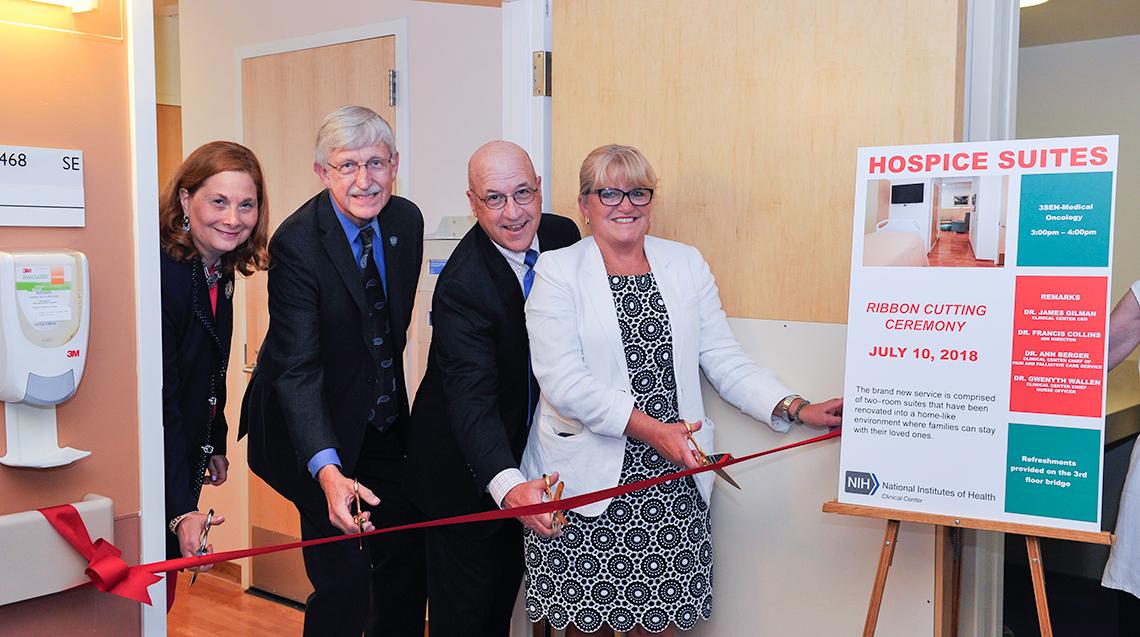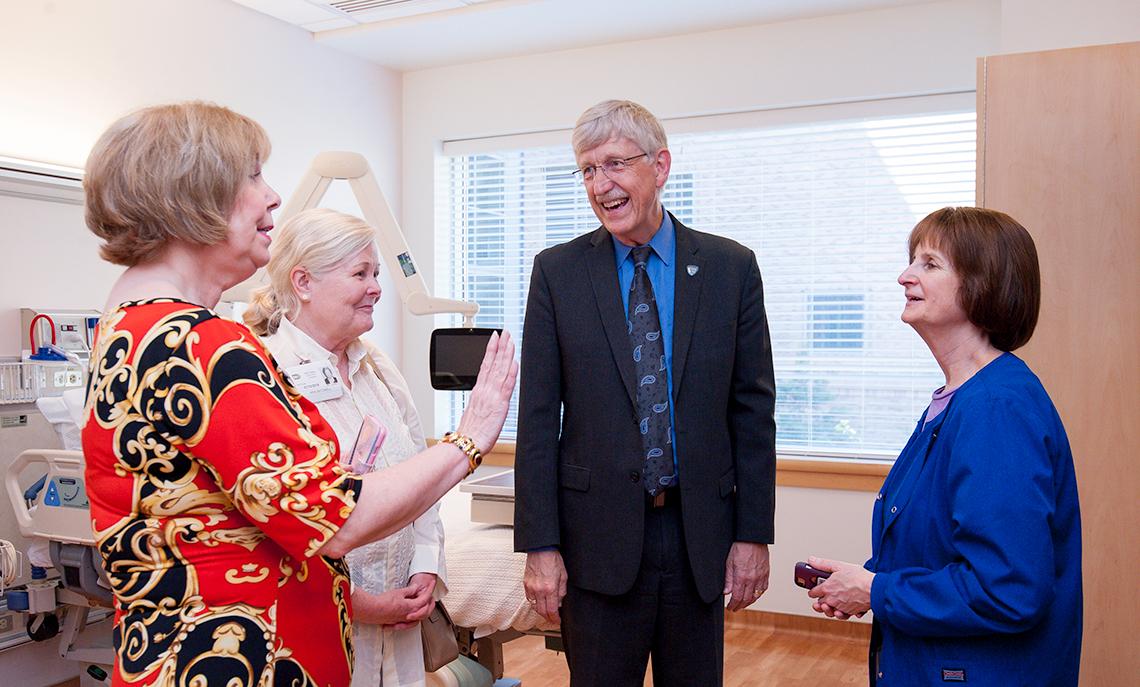20-Year Effort
Hospice Suites Debut at Clinical Center

Photo: Marleen Van Den Neste
The Clinical Center opened its first hospice unit on July 10. Located on the 3SEN-Medical Oncology floor, the unit consists of two rooms that have been converted into a home-like environment where families can stay with adult patients. Each suite has a bedroom and a community area, including a kitchen and family sitting area.
About 50 patients die each year at the CC, some suddenly, with no need of hospice care, and others whose passage is lengthier. NIH research has shown that people at the end of life need care in the areas of physical comfort, mental and emotional needs, spiritual issues and practical tasks. Their families need support as well.
“I think this is a wonderful development,” said NIH director Dr. Francis Collins, who attended the ribbon-cutting with his wife Diane Baker. He acknowledged that “noble efforts made to try to save lives…don’t always result in [a] happy outcome…We owe it to them in those circumstances where our best efforts are not succeeding to care for them in a place like this, to provide them with that kind of dignified loving surrounding while making it possible for them to be with their families in these final moments in a way that might otherwise be very difficult to arrange. Many of them are from far away.”

Photo: Marleen Van Den Neste
Collins credited CC staffers from social work, biomedical engineering, administrative management, primary care, spiritual care and many other departments as well as staff from many of the institutes, especially NCI and NIAID. “And certainly nursing’s leadership—especially oncology and critical care—have and will continue to play a really major role.”
He also thanked Dr. Ann Berger, chief of the hospital’s Pain and Palliative Care Service, for her long advocacy of in-house hospice at NIH. “Ann is a true pioneer in her field,” said Collins. “She helped found her department nearly 20 years ago, before it was well known as a discipline. And almost since then she fought to make this unit happen.”
Dr. Gwen Wallen, the Clinical Center’s chief nurse officer, noted that hospice staff have received special training, including invaluable advice from established caregivers at Montgomery Hospice and Casey House. One key insight, Wallen said, “is that these units need to be high-touch, not high-tech…I just want to thank everybody and those who were willing to take the chance to make this happen.”
